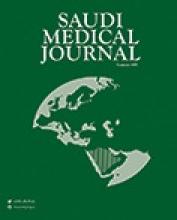Abstract
OBJECTIVE: To evaluate the outcome of intrauterine growth restriction fetuses with absent or reversed end-diastolic flow in the umbilical artery.
METHODS: This was a retrospective study conducted at the Department of Maternal Fetal Medicine of the Bakirkoy Women and Children's Teaching Hospital, Istanbul, Turkey between 2002 and 2006. Three hundred and ten pregnant women with growth-restricted fetuses confirmed by ultrasound were followed up with Doppler studies of the umbilical artery. The population was subdivided into 2 groups. Group 1, intrauterine growth restriction with positive end diastolic flow velocity waveforms, n=137 and group 2, intrauterine growth restriction with absent or reversed end diastolic velocities, n=163. Perinatal and neonatal outcomes of the 2 groups were recorded.
RESULTS: Group 1 was associated with a higher perinatal mortality and morbidity rate than group 2 p=0.02, odds ratio [OR]: 1.09, 95% confidence interval [CI] 1-3.5, p=0.03, OR: 2, 95% CI 1.2-3.2. In group 1, significantly more neonates were admitted to the neonatal intensive care unit, but no difference was seen in neonatal intensive care unit stay. The frequency of respiratory distress syndrome, septicemia, and necrotizing enterocolitis increased in group 1. There was no significant difference in need for ventilation of respiratory distress syndrome.
CONCLUSION: Our data suggest that pregnancies with absent or reversed end-diastolic flow in the umbilical arteries have high perinatal mortality and morbidity.
- Copyright: © Saudi Medical Journal
This is an open-access article distributed under the terms of the Creative Commons Attribution-Noncommercial-Share Alike 3.0 Unported, which permits unrestricted use, distribution, and reproduction in any medium, provided the original work is properly cited.






